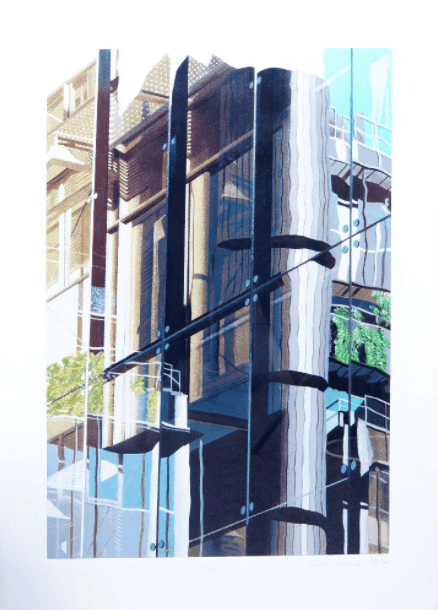Brendan Neiland, born 1941 in Lichfield Staffordshire, has had many notable points in his career to date. Most striking perhaps was his election to the Royal Academy in 1992. . . or perhaps his dismissal in 2004. A moment that has awarded him the accolade of being the first artist since James Barry in 1799 to leave in such a manner. Notoriety, arguably a key requirement of a successful artist, does not cover the full depth of the art created by Brendan Neiland. In truth, it is almost unjust that this is how he is so often introduced. Better is to recollect his position in the art community as the interpreter of modern architecture.
Every era of art has artists who react to contemporary architecture of the day and in turn inspire innovation in buildings. Thinking back through history Renaissance artists such as Michelangelo epitomise the feel of architecture of the day between lofty painted classical ceilings and Romanesque marbled columns. Giovanni Battista Piranesi (1720-1778), who I adore for his intricate often imaginary etchings of Italian architecture, ‘created a design for London’s Blackfriars Bridge’. Right through to the likes of le Corbusier (1887-1965) who led the way in defining a new architecture and art aesthetic for the modern era. In this continued dialogue between art and architecture stands Brendan Neiland as the representative of this conversation between modern British architecture and art.
If Norman Foster is the builder of glass super structures, Brendan Neiland is the archivist documenting and studying its effects on us in our landscape. In full circle, I am then sure that his work has inspired new connections and the further exploration of reflections, light, and glass in architecture.
In short Brendan Neiland defines architectural design, the glass high rise, reflectivity, and the new architectural landscapes of my lifetime.
Bibliography:
https://www.mallgalleries.org.uk/about-us/blog/art-architecture-whats-connection

 0118 948 1610
0118 948 1610 




